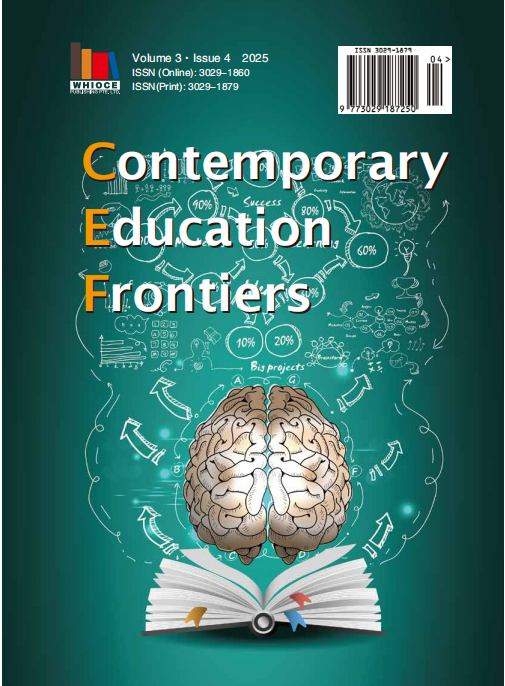Towards Capability Approach: Researching Gender Inequalities Represented in Ethiopian Higher Educational Policies
DOI:
https://doi.org/10.18063/cef.v3i4.1011Keywords:
capability approach, gender inequalities, higher educational policiesAbstract
On both national and international level, ‘gender issues’ have historically been viewed as one character of categorical inequality, constituting one of the fundamental terms toward social differentiation[1]. In the context of Ethiopia, particularly in higher education (HE), gender inequality always sustains, even when approximately two decades after the implementation of privileged access policies for women, who has been historically biased. Not only female students are marginalized both in participation and experience level due to gender norms, but also female staff are limited in career development [2]. Therefore, to address the gender inequality problems embedded in Ethiopian HE, a series of equality policies had been introduced in the past two decades, widening the access and participation for disadvantaged groups, especially for female students [3]. This article currently have a basis on capability approach to analyse the reconstruction of gender inequalities in Ethiopian HE equity policies, in order to transform the inequality problems.
References
Molla, T. 2014. Knowledge Aid as Instrument of Regulation: World Bank’s Non-Lending Higher Education Support for Ethiopia, Comparative Education 50, no.2: 229–248.
Molla, T. 2018. Higher Education in Ethiopia : Structural Inequalities and Policy Responses (1st eds.). Springer Singapore.
Molla, T. and Gale, T. 2015. Inequality in Ethiopian higher education reframing the problem as capability deprivation. Discourse: Studies in the Cultural Politics of Education 36, no.3: 383-397.
Therborn, G. (ed.). 2006. ‘Meaning, Mechanism, Patterns, and Forces: An Introduction’, Inequalities in the World. London: Verso, pp. 1-58.
Sen, A. 1993. ‘Capability and well-being’, in M. Nussbaum and A. Sen (Eds.), The Quality of Life, Clarendon Press, Oxford.
Rawls, J. 1971. A theory of justice. Cambridge, MA, Harvard University Press.
Walker, M. 2006. Towards a capability-based theory of social justice for education policy-making. Journal of Education Policy 21, no.2: 163-170.
Robeyns, I. 2003. ‘Sen’s capability approach and gender inequality: selecting relevant capabilities’, Feminist Economics 9, no.2/3: 61-70.
]Dreze, J. and Sen, A. 2002. India: Development and participation (2nd ed.). Oxford: Oxford University Press.
Sen, A. 1992, Inequality re-examined. Oxford: Oxford University Press.
Robeyns, I. 2003. ‘Sen’s capability approach and gender inequality: selecting relevant capabilities’, Feminist Economics 9, no.2/3: 61-70.
Lowry, C. 2008. Beyond equality of what: Sen and neutrality. Paper presented at Liberal Neutrality: A Re-evaluation CREUM, Montreal, Quebec, May 3, 2008. Retrieved July 31, 2013.
Robeyns, I. 2016. Capabilitarianism Journal of Human Development and Capabilities.
Mama, A. 2003. Restore, reform but do not transform: The gender politics of higher education in Africa. Journal of Higher Education in Africa 1, no.1: 101-120.
Levine, D. 1999. Greater Ethiopia: The Evolution of Multiethnic Society, 2nd edn, Chicago: The University of Chicago Press.
Molla, T. and Gale, T. 2015. Inequality in Ethiopian higher education reframing the problem as capability deprivation. Discourse: Studies in the Cultural Politics of Education 36, no.3: 383-397.
World Bank. 2003. Higher education for Ethiopia: Pursuing the vision. Washington, DC: Author.
TGE [Transitional Government of Ethiopia]. 1994. Education and Training Policy, Addis Ababa: St. George Printing Press.
Molla, T. 2013. Higher education policy reform in Ethiopia: the representation of the problem of gender inequality. Higher Education Policy 26, no.2: 193-215.
MoE [Ministry of Education]. 1998. Education sector development program (action plan) 1 (ESDP 1). Addis Ababa: Author.
MoE [Ministry of Education]. 2011. Education Statistics Annual Abstract 2009/10. Addis Ababa: MoE.
Semela, T. 2007. Identification of Factors Contributing to Gender Disparity in an Ethiopian University. Eastern Africa Social Science Research Review 23, no.2: 71–93.
Unterhalter, E. 2003. The capabilities approach and gendered education, Theory and Research in in Education 1, no.1:7-10.
UIS (UNISCO Institute for Statistics). 2010. Global education digest 2010, comparing education statistics across the world. Montreal: Author.
MoE [Ministry of Education]. 2011. Education Statistics Annual Abstract 2009/10. Addis Ababa: MoE.
MoE [Ministry of Education]. 2004. Five-year Strategic Framework for Enhancing Women’s Participation in Tertiary Education in Ethiopia 2004/08. Addis Ababa: Author.
MoE [Ministry of Education]. 2007. Education Statistics Annual Abstract 2005/06. Addis Ababa: Author.
UN [United Nations]. 1981. Convention on the Elimination of All Forms of Discrimination against Women (CEDAW). Geneva: Office of United Nations Higher Commissioner for Human Rights (OHCHR).
Eveline, J. 1998. ‘Naming Male Advantage: A Feminist Theorist Look to the Future’, in A. Mackinnon, I. Elgqvist-Saltzman and A. Prentice (eds). Education into the 21st Century: Dangerous Terrain for Women? London: Flamer Press: 177-199.
Walker, M. 2005. Higher education pedagogies. A capabilities approach (Maidenhead, SRHE).
Heckman, J. J. 2000. Policies to foster human capital. Research in Economics 54, no.1: 3-50.
Rizvi, F. and Lingard, B. 2010. Globalizing Education Policy. London: Routledge.
Sen, A. 1997. Human capital and human capability. World Development 25, no.12: 1956-1961.
Walker, M. and Unterhalter, E. 2007. The CA: Its potential for work in education. In M. Walker and E. Unherhalter (Eds.), Amartya Sen’s CA and social justice in education: 1-8. New York: Palgrave Macmillan.
Sen, A. 2009. The idea of justice. Cambridge, MA: Belknap Press of Harvard University Press.

